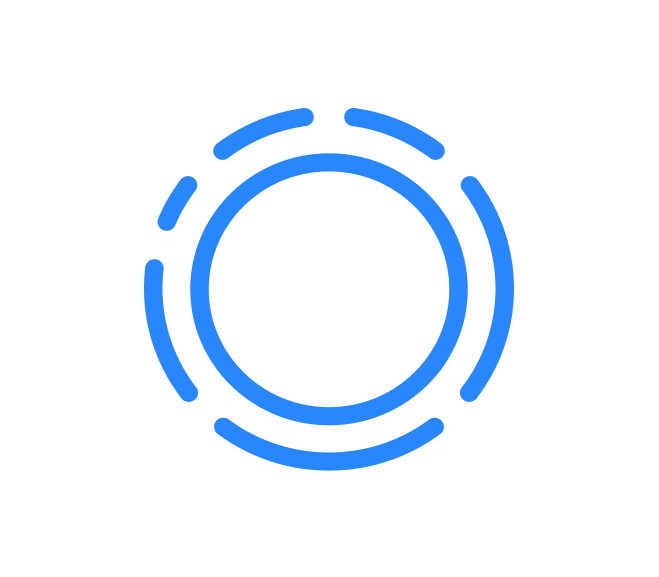
Design Thinking in Project Management: The Olsys Approach

By Alexander Byrkun, Technical Project Manager at Olsys
In today’s rapidly evolving technology landscape, project success is not defined by how closely teams follow a requirements document. Instead, true success comes from solving the right problems for the right people. With digital transformation, AI, automation, and cloud-native solutions reshaping industries at high speed, requirements often change before projects even reach completion. That’s why approaches like Design Thinking are critical—they help project teams stay human-centered, adaptable, and outcome-driven, ensuring that technology initiatives deliver real value rather than just features.
At Olsys, we manage projects for clients across diverse industries, often in complex outsourcing environments where alignment, innovation, and rapid delivery are critical. Our goal is not just to deliver what the client asks for, but to uncover what the end users truly need. That’s where real value is created.
This is why I integrate Design Thinking into project management. It provides a human-centered approach that complements structured methodologies, ensuring that outsourcing projects create impact—not just outputs.
What is Design Thinking?
Design Thinking is a human-centered problem-solving approach that emphasizes empathy, experimentation, and iteration. Instead of starting with constraints or deliverables, it starts with people—their experiences, pain points, and unmet needs.
The classic Design Thinking process includes five stages:
- Empathize – Understand users through observation, interviews, and research.
- Define – Clearly articulate the problem statement based on insights.
- Ideate – Brainstorm and explore creative solutions without immediate limitations.
- Prototype – Build simple, testable versions of solutions quickly.
- Test – Validate solutions with real users and refine them iteratively.
Why Design Thinking Matters in Outsourced Projects
In outsourcing, challenges like distance, cultural differences, and evolving requirements can create misalignment. By applying Design Thinking, Olsys ensures:
- Deeper Understanding of Client Context – We go beyond requirements documents to uncover real business drivers and user pain points.
- Shared Vision – Workshops and co-creation sessions align distributed teams and stakeholders around a common goal.
- Reduced Rework – Prototyping and early validation with users minimize wasted development cycles.
- Value-Focused Delivery – We measure success not just by “on-time, on-budget” delivery, but by adoption, usability, and business impact.

Practical Application in Projects
Here’s how Design Thinking can be integrated into real project workflows:
- Project Initiation: Use empathy interviews, stakeholder workshops, and journey mapping to uncover the true problem. Replace vague business cases with clear, human-centered problem statements.
- Planning: Incorporate ideation sessions and rapid prototyping into planning cycles. This helps refine requirements before locking them down.
- Execution: Blend agile sprints with testing cycles where user feedback drives adjustments.
- Monitoring: Instead of only tracking time, cost, and scope, measure user adoption, satisfaction, and impact.
- Closure: Conduct retrospective sessions not just on process efficiency but also on user outcomes achieved.
Benefits of Using Design Thinking in Project Management
- Improved Stakeholder Alignment – Everyone rallies around a problem statement rooted in real needs.
- Higher Success Rate – Projects deliver solutions that are usable, desirable, and viable.
- Faster Learning Cycles – Prototyping and testing reduce wasted effort.
- Better Risk Management – Early validation prevents costly misalignment later.
- Enhanced Team Engagement – Creative, collaborative methods motivate teams and break silos.
The Olsys Approach to Design Thinking in Project Management
We don’t treat Design Thinking as a one-off exercise—it’s woven into every phase of our project lifecycle:
-
Discovery & Empathy
- Conduct stakeholder interviews, user research, and journey mapping before finalizing requirements.
- In outsourcing setups, we leverage virtual collaboration tools to bridge geographical gaps.
- Map pain points and unmet needs, not just requirements
- Conduct stakeholder interviews, user research, and journey mapping before finalizing requirements.
-
Problem Framing & Definition
- Translate business needs into clear, human-centered problem statements.
- Align clients, users, and our teams on what success really looks like.
- Define success metrics beyond delivery milestones
- Translate business needs into clear, human-centered problem statements.
-
Co-Creation & Ideation
- Facilitate brainstorming sessions across distributed teams.
- Encourage diversity of thought—our global talent pool brings unique perspectives.
- Facilitate brainstorming sessions across distributed teams.
-
Rapid Prototyping & Testing
- Develop lightweight prototypes to test ideas early.
- Gather feedback directly from end-users, iterating quickly before scaling development.
- Test one hypothesis per prototype
- Develop lightweight prototypes to test ideas early.
-
Execution with Iteration
- Integrate agile sprints with user feedback loops.
- Continuously validate whether the solution addresses the defined problem.
- Reassess priorities when user feedback reveals critical gaps
- Integrate agile sprints with user feedback loops.
Benefits for Our Clients
Clients working with Olsys experience:
- Faster Market Validation – Validate concepts before heavy development investment
- Solutions that Truly Fit – Projects are grounded in real user needs, not just assumptions.
- Innovation with Discipline – Creative approaches balanced with structured project management.
- Lower Risk, Higher ROI – Early testing reduces the chance of expensive failures later.
- Engaged Stakeholders – Clients, users, and our teams collaborate as one.
Conclusion
At Olsys, we see Design Thinking as more than a framework—it’s a mindset that guides how we manage outsourced projects. By combining structured project management with a human-centered approach, we deliver not only on time and budget but also with impact and value.
In today’s competitive landscape, projects succeed not because they are executed flawlessly, but because they solve the right problems in meaningful ways. That’s the Olsys difference.










